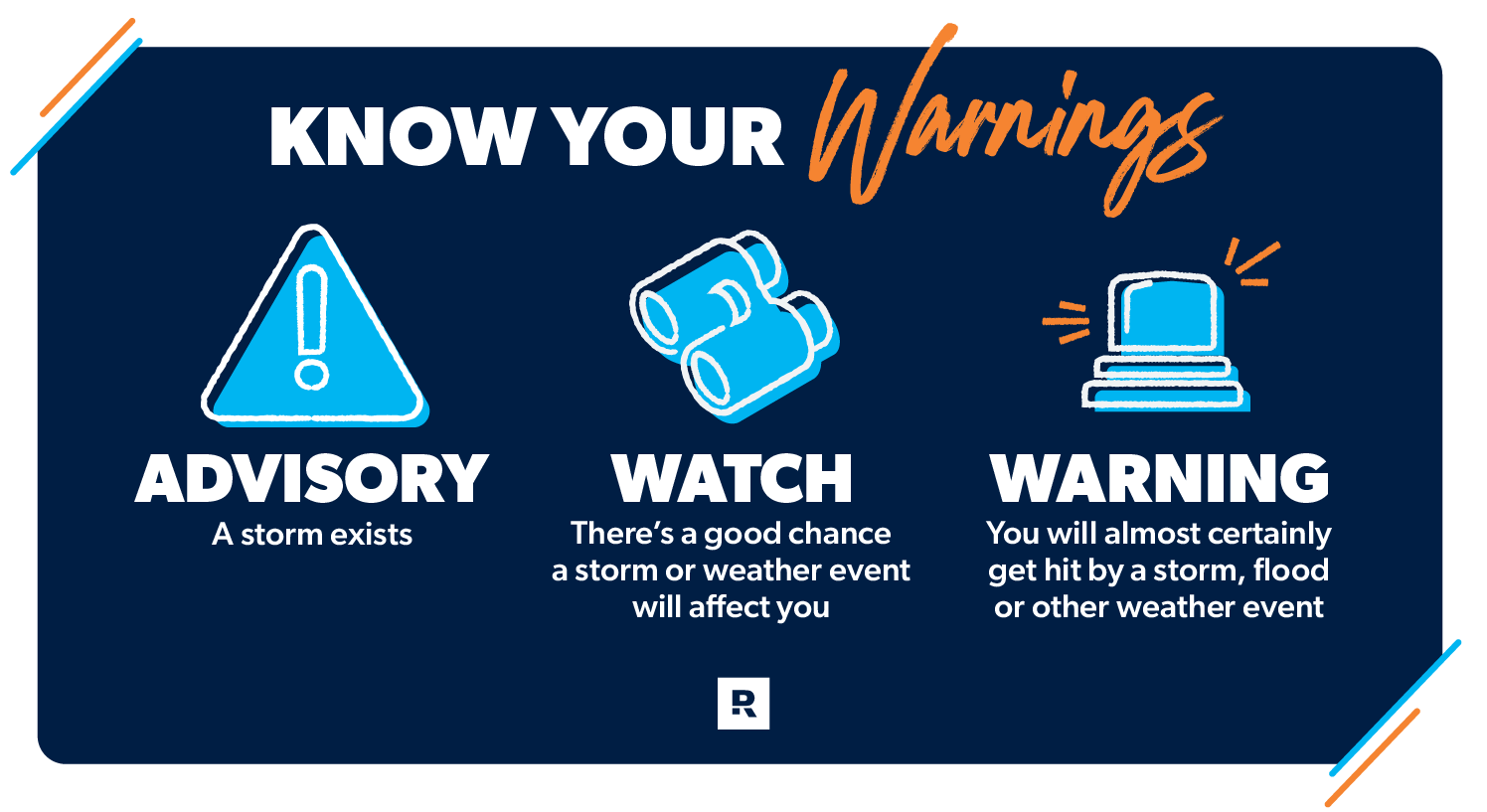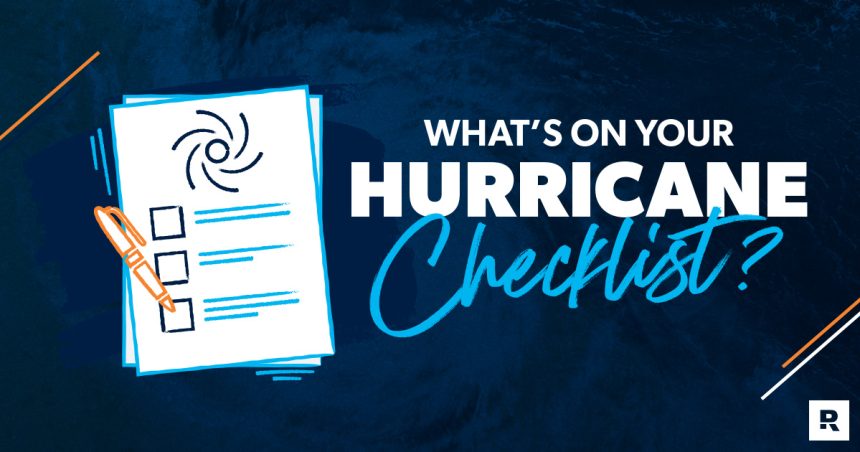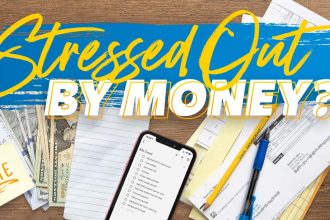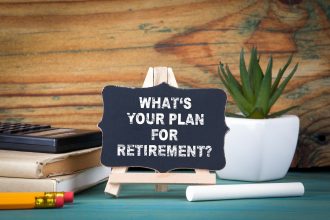Hamburgers, check. Cookies, check. Lord of the Rings Extended Edition, check. For some people (looking at you, Floridians), a hurricane checklist appears more like a Fourth of July cookout list than a disaster plan. While hurricane parties are a real thing, so are the problems you’ll face if the storm’s fury hits you unprepared.
So, let’s make that hurricane checklist.
- Prepare for hurricane season by creating a hurricane checklist
- A hurricane checklist should cover everything you’ll need (or need to do) before, during and after the storm.
- Protect your biggest asset by making sure your homeowners policy covers hurricane damage and buying hurricane insurance if it doesn’t.
What Is a Hurricane Checklist?
This is a list that covers everything you need to be prepared for when a hurricane is headed your way. You should go over your hurricane checklist every year before hurricane season begins—that’s June 1 through November 30, folks.
What Should Be on Your Hurricane Checklist?
Making a list and checking it twice isn’t just for Christmas—it’s for hurricane season too. Your hurricane checklist should include what you’ll do before, during and after the storm. When making a list, think about the most likely worst-case scenario and what you’ll need to still be okay.
Things like:
- Where will you go (and what will you take with you) if the state calls for an evacuation?
- What will you do if the power goes out?
- What will you do if water gets polluted?
- What will you do if your house is damaged?
- What will you do if you run out of gas?
And the list goes on . . .
If you live in a hurricane-prone area you need to make sure your homeowners insurance covers hurricane damage. Because if it doesn’t, you need to get extra hurricane insurance.
Before the Storm
You’re watching the swirling white mass get tighter and tighter on your screen as your favorite meteorologist explains the storm is “organizing.” You see your town is in the “cone of uncertainty.” What should you do if a hurricane is headed your way?
Have an Evacuation Plan
As the storm gets closer, you need to decide if you’ll get out of Dodge or batten down the hatches to wait it out.
Know your evacuation zone.
If it’s the real deal, your local officials will order evacuations by zone. You’ll know whether you need to evacuate by the zone your home is in. They usually start in Zone A (that’s the most vulnerable) and then move on to Zone B, C, etc. The number of zones depends on which state you live in.
Make your decision early.
We know, deciding whether you should stay in your home or evacuate is hard. But whatever you do—don’t wait until the last minute to decide. You don’t want to make a panicked decision.
Also, you don’t want to get caught traveling when the storm hits—evacuation routes get very clogged.
Keep a full tank of gas in the car.
If something you couldn’t foresee happens and you need to get out fast, you can hit the road to put more distance between you and danger. Plus, gas stations might be closed during a power outage, or they could run out of gas altogether once people start evacuating.
Know which roads to take.
States that see a lot of hurricanes usually mark evacuation routes from the coast. If you’re not on the coast, figure out your route, doing your best to avoid roads that might flood or get jammed.
Protect your home and your budget with the right coverage!
And can we say it just one more time? Don’t wait until the last minute to leave town.
Know where you’ll stay.
Figure out whether your home is a safe place to shelter during the storm. If you live on the coast or in a mobile home, you may want to leave. (In fact, they might just make you!)
Crash with friends and family out of the storm’s path if you can. Or if you’d rather stick around (but need some place safer than your house), check with local hurricane shelters.
If neither of those options work out, then you might have to travel to a hotel to get away from the storm. Be prepared—scarce rooms could drive prices way up. This is a great reason to have an emergency fund. But hopefully, you don’t have to use it.
Protect Your Home
Whether you’re leaving or sheltering in place, you’ll want to protect your biggest asset: your home. Make sure you have homeowners insurance that will cover damage from a hurricane. If your policy doesn’t offer hurricane protection, you may need extra hurricane insurance. If you’re in a low-lying area or flood zone, make sure you have flood insurance.
Renters! You need renters insurance. Your landlord’s insurance won’t cover your possessions if you lose them in a hurricane.
Once you’re sure you’ve got the right coverage, take these steps to help limit damage.
Prepare for wind.
How much preparation you need to do will depend on how far you live from the point of landfall. If you’re right on the coast where a Category 1 hurricane is going to make landfall, you’ll probably need to take storm-proofing your house very seriously. If you live 50 miles inland, on the other hand, winds will be much weaker.
To prep your house for high winds you can:
- Board up windows. Plywood nailed over your windows can go a long way to protect your house.
- Install hurricane shutters. These are expensive and permanent, but it means you don’t have to keep nailing plywood to your house.
- Professionally thin out large trees. This will reduce the chance high winds will blow them over onto your house.
Prepare for flooding.
Extreme winds aren’t the only hazard with a hurricane. These massive storms take warm water from the ocean and dump it onto land in the form of storm surge and rain. If you live near the coast or in a low-lying area, you need to make sure you’re ready for a flood.
Here are some ways to prep:
- Sandbag. Divert water away from your home by building sandbag barriers.
- Clean storm drains and gutters. Make sure everything is draining properly.
- Install a sump pump. If you have a basement, a sump pump can keep it from filling up with water.
Keep in mind, regular homeowners insurance doesn’t cover flooding from hurricanes. If you live in a flood-prone area, make sure you have flood insurance.

Do You Have the Right Insurance?
Find out what insurance coverage you should add, tweak or drop based on your individual needs.
Take the Coverage Checkup
Get Your Important Documents Ready
Make sure you have all your important documents with you (if you’re evacuating) or stored in a safe, waterproof spot (if you’re staying put). We’re talking about your:
Charge Cell Phones and Tablets
No, this isn’t so your kid can play Lego games on their iPad (although, no judgment if that’s your way of keeping them happy during a storm). You want everyone’s devices charged up so if the power goes out, you can stay up to date with the weather in your area and be able to get in touch with someone if you need help.
Know Your Warnings
If you’re a weather nerd you probably don’t need this info, but for those who didn’t grow up watching The Weather Channel for fun: Make sure you know what all the watches, warnings and other terms mean so you can know what to prepare for.

Warning: These are the most serious. If a warning is issued (examples: Storm Surge Warning, Hurricane Warning, Flood Warning, etc.), you can be pretty dang certain whatever it is, it’s coming for you.
Take these seriously and do whatever officials are instructing. If they say evacuate, evacuate.
Watch: Watches are usually issued before warnings or around the periphery of areas under a warning. With a Hurricane Watch, officials believe there is a possibility of hurricane conditions in your area.
Advisory: If authorities issue an advisory it simply means there’s a weather system or event to keep an eye on. It will include stats like the location, windspeed and pressure of the storm.
|
Know Your Warnings |
||
|
Advisory |
Watch |
Warning |
|
A storm exists. |
There’s a good chance a storm or weather event will affect you |
You will almost certainly get hit by a storm, flood or other weather event. |
Check In With Neighbors
Check in with your neighbors to make sure they’re ready. It’s also a good idea to know what they’re doing to prepare in case it impacts your property. For example, if your neighbor is getting 500 sandbags and will be blocking water from flowing into their backyard, that water is going to go somewhere else (hint: your backyard).
It’s also a good idea to offer your house as a shelter in case theirs becomes unsafe and to ask if you can evacuate to their house if the situation is reversed.
Gather Supplies for a Kit
You can put a kit together long before a storm is on the way. Like we mentioned before, when you’re giving your hurricane checklist the once-over each year, make sure all the items in your hurricane kit are good to go and refresh anything that needs to be replaced.
Here’s what should be in your hurricane kit:
Bottled Water
(3-Day Supply for Evacuation, 2-Week Supply for Home)
Clean water can be hard to come by in a disaster—and no one wants to drink dirty water (yuck!). So instead of having to boil water before you drink it (yep, that’s a thing), go ahead and keep bottles of water on hand with your hurricane kit.
You can never have enough water, really. And if you end up not using it all, you can always give it away to another family who wasn’t as prepared as you. How awesome would it be to bless someone else like that?
Nonperishable Food
(3-Day Supply for Evacuation, 2-Week Supply for Home)
If you need a refresher on what nonperishable means, we’re just talking about food that has a long shelf life and doesn’t need to be kept cold in the fridge. So, what should you buy? Glad you asked. Here’s some food you should stock up on:
- Peanut butter
- Jelly
- Bread
- Crackers
- Granola bars
- Popcorn
- Protein bars
- Canned vegetables, beans and meats like chicken and tuna
- Instant coffee
Emergency Essentials
You’ve got to prepare like the power will go out—because it probably will at some point. And the more supplies you have on hand, the longer you’ll be taken care of. According to the government, these are some of the emergency supplies you should have handy in your hurricane preparedness kit (plus we threw in a few other ideas too):1
- NOAA Weather Radio (or any battery-powered radio will do)
- Flashlight
- Batteries
- First-aid kit
- Can opener
- Whistle
- Dust mask
- Physical copies of maps
- Wrench or pliers (to turn off your utilities)
- Moist towelettes, trash bags and plastic ties (for sanitation)
- Hand sanitizer
- Medications (seven-day supply on hand)
- Swiss Army knife (or any kind of multipurpose tool like that)
- Toilet paper and personal hygiene items (toothbrushes, deodorant, etc.)
- Gas can filled with gas
- Cash (ATMs might be out of order, and debit card readers might not be working)
During the Storm
All right, it’s go time. Hurricane Ermahgerd is already on land and raging. The palm trees are flapping, and the weathermen are standing out in the rain with their hoods on gripping their mics. What are you doing?
Stay Informed
You’re staying informed. Weather professionals love to predict, but the truth is the weather is not bound to stick to their predictions (and rarely does). You want to know what’s happening. Hurricanes can spawn tornadoes, winds can be worse than expected, and flooding can happen quickly. Make sure you keep on top of conditions by checking your local weather station or radio.
The National Weather Service put together a handy list of free alert apps you can find here.
How to Stay Safe During a Hurricane
Whether you’re one of those people who sleeps through hurricanes or stays glued to your phone, there are some things you should do to make sure you’re safe while the storm sweeps through.
- Stay inside.
- Stay away from windows.
- Shelter in an interior room (think a room with no outside walls) if the winds get really high or a tornado comes near.
- Stay out of rooms under large trees.
- If your home starts to flood, go to your house’s highest level, but stay out of the attic because you could get trapped.
Free Hurricane Checklist
If you’re ready to be prepared in case of a hurricane, here’s a free checklist to help you stay on track.
After the Storm
The winds have died to a fresh breeze and the sky has stopped leaking. What do you do now? Let’s dive in (not into the flood waters—stay out of those).
How to Stay Safe After a Hurricane
Hopefully your house is still standing with the roof intact, but regardless, the dangers aren’t over yet.
Make sure to tune into local officials. They’ll let you know when it’s safe to come out of shelter and what’s going on in your area.
If your location is flooded, stay out of the flood waters. Flood water can contain sewage and all sorts of debris and toxic materials. If the water’s moving that can also pose a real danger. Six inches of water can knock a person over and one foot of water can move a car.2
Once it’s safe to go outside and start the cleanup, make sure to wear protective gear and don’t touch downed wires or any damaged electrical equipment.
Stay In Touch
Limit all phone calls to emergencies. During disasters, phone lines can get very busy or be fully down. Text messages and social media are good ways to stay in touch with loved ones.
Document the Damage
If your home is damaged, take photos and notes to show your insurance carrier when you start your claim. Make sure to show flood lines on walls if there was flooding.
Be prepared for your claim to take a long time. If damage was widespread, insurance companies will be inundated with folks making claims.
Help Your Community
If you’ve gotten by relatively unscathed, pitch in and help those less fortunate! Volunteer with a disaster relief organization, like the Red Cross or Habitat for Humanity. Or it can be as simple as helping your neighbor clean up their yard.
Get Protection Before the Storm
There’s a lot you can do to get yourself and your family prepared before the storm hits. If there’s just one thing you take away from everything we just threw at you, let it be this—don’t wait until the last minute to prepare. And don’t make figuring out your insurance the last thing on your hurricane list.
If you live in an area like Florida that gets a lot of hurricanes, you might need hurricane insurance. At the very least, make sure your homeowners insurance is up to date. If you’re not sure if your home insurance is current or whether you need to add hurricane insurance, talk to a pro. RamseyTrusted insurance pros are experts in their field and can help you get the right protection for your biggest asset.
Now, what are you waiting for? Go get started on that hurricane checklist so you have peace of mind all hurricane season long.
Frequently Asked Questions
-
What causes a hurricane?
-
Hurricanes start as a low-pressure system and grow as they move over warm waters in tropical regions of the ocean. As they gather strength, they organize and become tropical depressions, tropical storms and finally hurricanes.
-
When is hurricane season?
-
Hurricane season begins June 1 and runs through November 30.
-
Hurricane vs typhoon: What’s the difference?
-
The only difference between a hurricane and a typhoon is what part of the world they develop in. Tropical storms with winds above 74 mph that develop in the Northeast Atlantic and Northeast Pacific oceans are called hurricanes. The same strength storm that forms in the Northwest Pacific Ocean is called a typhoon.3
-
What to do during a hurricane?
-
If you’re weathering a hurricane, you have some options for what to do:
- Throw a party.
- Jump into your swimsuit and go “feel the power of the storm.”
- Tell scary stories when the power goes out.
- Consult your hurricane list, prepare your home, and stay safe.
We vote for the last one (and maybe number 3 too—that one sounds fun). The most important thing to do during a hurricane is stay safe: Find appropriate shelter, listen to local officials, and obey any evacuation orders.
-
How do you stay safe during a hurricane?
-
We’ve said it a few times now, but we’ll say it again: Staying safe is your biggest priority during a hurricane. There are a few things you can do to make sure you are as safe as possible:
- Make a hurricane checklist that includes all the prep work you need to do and important phone numbers and information.
- Make a hurricane kit (this includes batteries, flashlights, water and nonperishable foods).
- Stay tuned in to local officials and weather information.
- Evacuate if told to.
- If sheltering in place, stay away from windows and go to interior rooms during high winds.
- If sheltering away from home, get to the shelter before the storm starts.
- Stay out of flood waters.
- Don’t touch damaged electrical equipment.
Read the full article here














